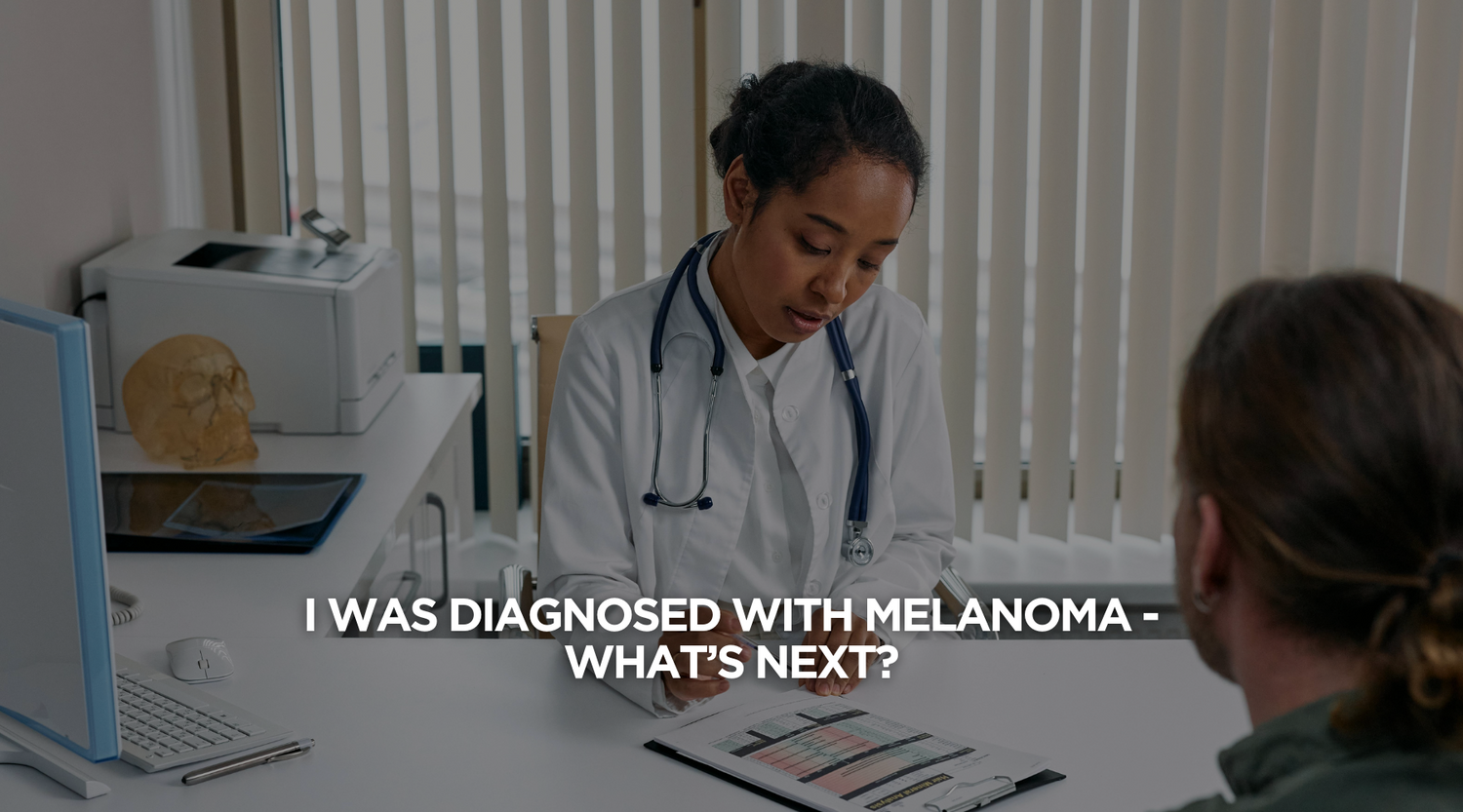Hearing the words “you have melanoma” can be overwhelming. Whether it was caught early during a routine skin check or after noticing a suspicious spot, a melanoma diagnosis is serious—but not necessarily a life sentence. With early detection and the right treatment, many people recover fully.
This guide outlines what usually happens after a melanoma diagnosis, what to expect in terms of treatment and follow-up, and why sun protection becomes even more critical from this point forward.
Understanding the Diagnosis: What Doctors Do First
Once melanoma is confirmed through a skin biopsy, your doctor will assess the stage of the melanoma to determine how advanced it is. This may involve:
-
A wider excision of the affected area to ensure all cancerous cells are removed
-
A sentinel lymph node biopsy (for certain depths) to see if the cancer has spread
-
Imaging scans (if needed) for later-stage melanomas
Stages of Melanoma:
-
Stage 0 (in situ): The cancer is only in the outermost layer of skin. Usually treated with surgical removal.
-
Stage I & II: Localised melanoma with increasing depth but no lymph node involvement. Surgery is typically curative.
-
Stage III: Melanoma has spread to nearby lymph nodes. Treatment may include surgery, immunotherapy, or targeted therapy.
-
Stage IV: Cancer has spread to distant organs. Requires a multidisciplinary approach including immunotherapy, radiation, or clinical trials.
Treatment Plans Are Personalised
Depending on the stage, location, and patient health, your care team may include a dermatologist, surgical oncologist, medical oncologist, and nurse specialist.
You may need:
-
Regular dermatology follow-ups every 3–6 months
-
Blood tests and imaging to monitor for recurrence
-
Lifestyle changes to reduce further risk
Why Sun Protection Is More Important Than Ever
A melanoma diagnosis is a wake-up call: your skin has already been damaged by UV exposure. Going forward, sun safety isn’t just precaution—it’s essential.
According to the Melanoma Institute Australia, people who’ve had melanoma are at increased risk of developing it again. That’s why dermatologists recommend comprehensive sun protection measures every day, regardless of the weather or time of year.
Make UPF50+ Clothing Part of Your Routine
Clothing is the most reliable form of sun protection. At SParms, we specialise in UPF50+ garments that block 98% of UVA and UVB rays—helping people live actively while minimising future skin damage.
Our range includes:
-
Arm Sleeves and Shoulder Wraps for full upper body protection
-
Gloves and Neck Gaiters to cover often-missed areas
-
Lightweight, cooling fabric that’s breathable and comfortable even on hot days
UPF50+ clothing offers a dependable shield when sunscreen rubs off, sweats away, or isn’t reapplied in time.
Final Thoughts
A melanoma diagnosis is life-changing, but it also gives you the opportunity to take control of your health. With early treatment, vigilant monitoring, and daily sun protection habits—including wearing SParms UPF50+ gear—you can reduce the risk of recurrence and protect your skin for years to come.
If you or a loved one has recently been diagnosed with melanoma, speak with your medical team about sun safety, long-term prevention, and how to build a routine that protects your skin every day.
Protect what matters most—your health, your future, your skin.
